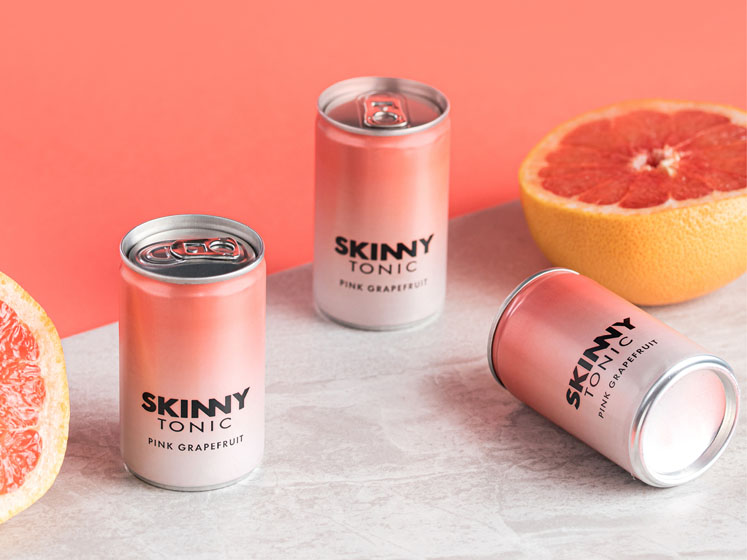It was recently announced that PureCircle and Synergy Flavours had collaborated to create a range of zero-sugar tonics for the Skinny Drinks Group, which had been sweetened with PureCircle’s Reb M stevia extract.
The Group’s previous tonics had been formulated using a Reb A extract that was cited as having “some flavour limitations.” With the understanding that PureCircle’s Starleaf Reb M delivers a sugar-like taste and has enabled the company to both reformulate its existing tonic range and develop new lines, which are set to launch later this year, Dr Kevin Robinson delved a little deeper.
Speaking with Vicky Berry and Jill Ngo from Synergy Flavours, I broach the tricky topic of previous experiments with stevia and ask how some of the traditional hurdles have been overcome.
“There’s been quite an evolution with stevia,” says Jill: “especially in terms of quality. A lot has happened since this exciting, naturally devised sweetener first appeared and both the blends and the end products on the market have changed significantly."

Jill Ngo
From a flavouring perspective, we’ve learned a lot about what needs masking, what we can enhance and optimise with acidity regulators, which flavour directions work best and what we can actually create."
"With PureCircle’s Reb M, we’ve been able to enhance these products even further by looking at different dosages and blends, various flavours and extracts, etc., to come up with the solutions that are now in the cans.”
Asking about specific formulation challenges, Jill suggests that overcoming people’s perception of stevia’s taste could be an issue or not being able to achieve the sweetness level that’s required because of the maximum permissible limits within Europe.
“We’ve got this sweetness element, the acidity and, in tonic waters, we’ve got the bitter element as well,” she says, “so it’s quite a complex system to work with."
"Then, there’s the botanical extracts — our flavours — and the need to balance the sweetness profile and avoid any off-notes. But, being able to collaborate with PureCircle, we were able to do double the work and tackle it from different angles.”
“Another contributing factor was the need to make these products suitable for diabetics without compromising on taste,” adds Vicky: “The owner of the Skinny Drinks Group has diabetes and he felt that there weren’t enough products on the market to accommodate his dietary requirement. As such, he had a very clear vision for these tonics.”
“Priority number one was that they didn’t taste like diet products. He wanted the best tasting tonic on the market, not the best tasting diet tonic. It was quite aspirational to be doing something that was going to break boundaries, push limits and deliver a completely different end product.”
A busy market, strange times
Considering the huge popularity of mixers, tonics and gin-related beverages at the moment, I wondered whether these trends influenced the final formulations.
“When the project started, we actually analysed four brands of gin using GCMS to better understand the key aroma compounds. We then used the analysis to develop flavours and extracts that scientifically paired with the key aroma compounds identified across the brands."

Vicky Berry
"And all of this was done without the Reb M. Initially, it was all about gin and working out how to create flavours that pair with its key aroma compounds. Of course, as end products, we also wanted the tonics to be flavoursome enough to work as a standalone soft drink; hopefully, they’re both tasty and multifunctional,” says Jill.
Amongst all the other obstacles to overcome, the collaboration took place during difficult times. “It’s been quite a challenge for us,” says Vicky: “Although the team have been able to get into the labs, we’ve had to work in a socially distanced way."
"So, instead of having 5 days on-site, our applications team was only able to get 2–3 days a week of shared lab space. Obviously, that wasn’t unique to us, but we had to organise the work to make sure that when we got to the bench, we knew exactly what we were doing to get samples ready, particularly if they needed to be dispatched to customers.”
“Fortunately, in addition to our own limited lab space, we were also able to use PureCircle’s facilities, which effectively doubled the time we had at the bench and added to the collaborative nature of the project,” adds Jill.
“Yes, it’s been a real challenge; but, more positively, we’ve now implemented new ways of working … and I think the remote tastings we organised have actually been very successful. What with virtual conferencing and video calls, we’ve been able to make it work.”
I suggest that some of these recently adopted practices could become standard procedures now because of the convenience and efficiency benefits. Jill agrees: “I’ve had days when I jump from project to project, country to country, etc., and then realise how much time (and money) I’ve saved."
"Yes, it’s time consuming to prepare extra samples and you have to put a lot of faith in couriers to deliver them, but eliminating so much travel and, from a technical perspective, being able to commit to more meetings, certainly has its advantages.”
Vicky adds: “Although not having to drive up and down motorways is a definite benefit, it’s always been rewarding to run tastings with customers, work with colleagues at the bench together and, sometimes, just chat about a problem or an issue."
"But, there are things that we’ll absolutely continue to do, such as use video conferencing, because we’ve adapted really well to that format and I don’t think it’ll be going away anytime soon. At the start of the pandemic, no one wanted to turn their camera on; now, of course, nobody thinks twice about it.”
Lessons learnt
Returning to the topic of new product development and, in particular, the Skinny Tonic experience, I ask what influence this might have had on future projects or where consumer demand might be heading in terms of flavours or new products.

“I think it’s really interesting to look at other trends and different categories,” says Vicky: “Some of the developments we’ve seen in tonics have definitely happened because of what’s happening in the gin market. As gin profiles change, we see that being reflected in tonics."
"As a result, we’re now aware of orange-flavoured tonics, for example, which is a really big profile in gin. At the same time, berry profiles are booming; the growth of blackcurrant gins, for instance, is affecting the development and launch of complementary mixers.”
“It’s a really interesting area,” she adds: “If you look at a bottle of flavoured gin and how much that costs, it can be quite a big expenditure. But, if you just want to try something different, you can buy a pack of tonics and it’s a far cheaper option."
"You can experiment with the cheaper tonic flavours and use them to complement a standard, unflavoured gin. From a trends point of view, I definitely think we’ll see more of those kinds of behaviours.”
“With this new blend of stevia,” adds Jill, “we’re now able to develop certain flavours that might not have been possible previously. For example, orange has been notoriously difficult to make work with stevia in the past; now, there’s a new orange product coming out that we’re really confident about using and it’s nice to know that we have a larger creative space to operate in.”
“Another aspect is provenance,” says Jill: “This is becoming increasingly important, particularly regarding some of the profiles we’re working with."
"Responsible sourcing is an imperative; we work closely with our citrus suppliers and, with the rise in popularity of different citrus profiles — such as pink grapefruit or bitter orange — that’s going to ever more crucial. With more citrus twists coming along — whether that’s through the use of different varietals or different regions — provenance is very much at the top of our thinking for now and the future.”
